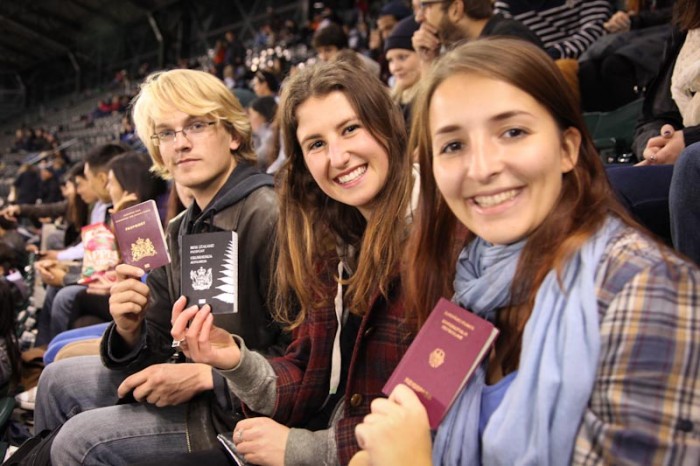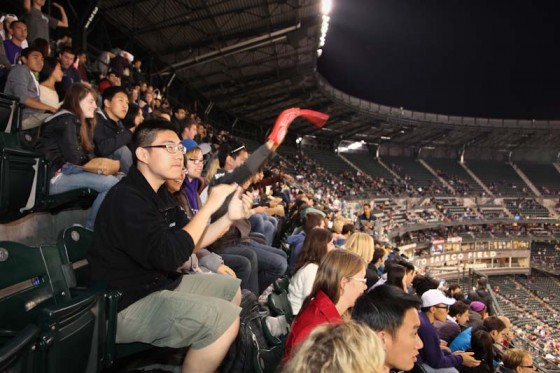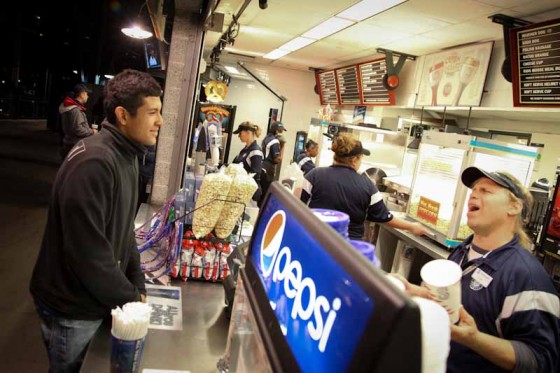
The number of international students at University of Washington doubled in the last 5 years. But the resulting cross-cultural experiences aren’t always easy.
The first leaves are yellowing, mornings have turned chilly and Red Square is full of students scrambling to find their classes among a maze of imposing brick buildings.
Fall quarter is under way at the University of Washington but many of this year’s incoming freshman aren’t just navigating a new campus, they’re navigating a new country.
The UW’s international-student population has steadily increased over the past decade, more than doubling since 2007. But a recent rise in international freshman represents a new population on campus and a global trend toward American undergraduate education.
Almost 20 percent of last year’s incoming freshmen at the Seattle campus were international students, a percentage that is expected to hold steady in 2013.
“There’s a lot of pressure on students to receive undergraduate degrees from American institutions,” says Era Schrepfer, executive director of the Foundation for International Understanding Through Students (FIUTS), an on-campus organization dedicated to providing orientations and year-round activities for international students.
“The increasing middle class in other countries is allowing people to afford it … The application pool is very, very large.”
And that pool seems to watch university rankings closely, says Machelle Allman of International Student Services at the UW, who notes a number of surveys that position the University of Washington high on their lists of top universities in the world.
The location of the UW doesn’t hurt either.
“Most of our students are from the Pacific Rim,” says Allman. “And Seattle is a direct flight from Tokyo or Seoul.”
Being close to home doesn’t seem to be a concern for Wenbing Zhang, a 19-year-old freshman from Beijing. He spent a year of high school in North Carolina but is celebrating the first evening of his college career at Safeco Field on a FUITS outing to watch a Mariners game.
“The air here is so clean,” he says, gesturing beyond the scoreboard to where downtown’s skyline hangs in the night as alternating strings of lit windows. “There’s all this American culture, this baseball team.”
 Wenbing Zhang, 19, of Beijing, China, an incoming freshmen at UW, celebrates a Mariners home run with other UW international students. (Photo by Alex Stonehill)
Wenbing Zhang, 19, of Beijing, China, an incoming freshmen at UW, celebrates a Mariners home run with other UW international students. (Photo by Alex Stonehill)
There’s often a “honeymoon stage,” says Schrepfer, adding that going away to college is a serious transition for any student — especially for students who are immersed in a new culture. “They realize they’re going to be here for a while. Little problems become bigger problems.”
Some of those problems are standard freshman fare — homesickness or trouble making new friends — but others can be more complicated. Many international freshmen live in dorms where close quarters can result in cross-cultural misunderstandings.
Since this new influx of international freshman, FIUTS has started participating in dorm resident-adviser trainings to help facilitate cultural sensitivity. Last year they navigated such topics as nudity (Americans are often less comfortable with it than foreign students) and hanging laundry on balconies (a common practice in many countries, but against dorm policy).
Schrepfer says that open communication between American and international students is crucial: “You have to encourage them to talk about it.”
But some American students say that communication isn’t happening on the campus as a whole.
“I know zero international students,” says Levi Logstrom, a UW junior who was at the Mariners game with his fraternity.
Logstrom says he has noticed an increase in international students in classes and on campus but hasn’t made any personal connections.
“International students kind of have their own thing going. There’s kind of like a barrier,” he said.
 Edgar Hernández, a visiting UW student from Guadalajara, Mexico, negotiates soda sizes with a Safeco Field food vendor. (Photo by Alex Stonehill)
Edgar Hernández, a visiting UW student from Guadalajara, Mexico, negotiates soda sizes with a Safeco Field food vendor. (Photo by Alex Stonehill)
Zhang, sitting one section of bleachers over from Logstrom, might be disappointed to hear this.
From his enthusiasm for the game (he balked at my suggestion that baseball might be boring to a new viewer) to his American name “Michael” (adopted because it’s “easier,”) it’s clear that Zhang is excited to experience and participate in American culture.
But academics are his first concern. He’s an aspiring electrical engineer who says the UW offers one of the best programs in the country.
“For my education’s sake I chose to come to America,” he says, his eyes flicking down to the fluorescent green field trying to follow the game as we talk.
It was, after all, the first day of school.

